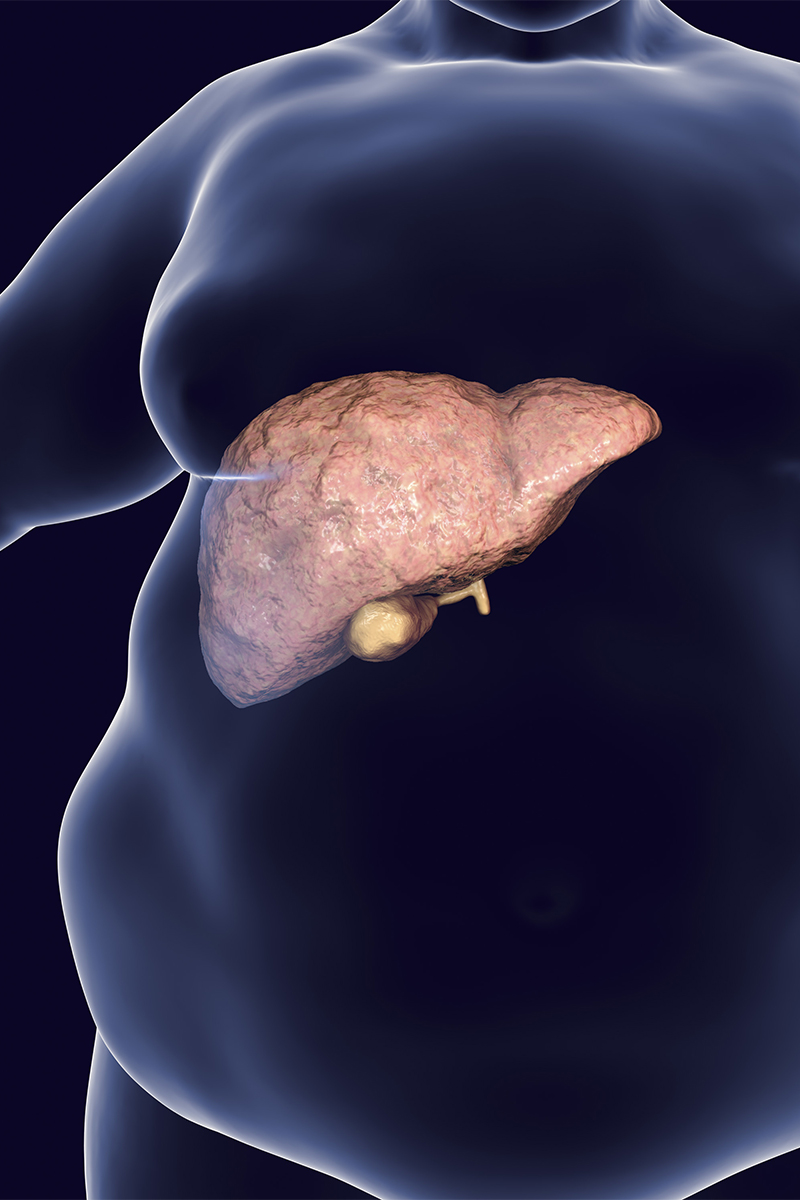Best-In-Class Health Solutions
Our revolutionary drug product candidates help combat the following conditions:
Non-alcoholic fatty liver disease ("NAFLD") is a reversible condition wherein large vacuoles of triglyceride fat accumulate in liver cells via the process of steatosis.
NASH is a more advanced state of NAFLD and can progress to a cirrhotic liver and eventually hepatocellular carcinoma or liver cancer. Twenty to thirty percent of the U.S. population is estimated to suffer from NAFLD and fifteen to twenty percent of this group progress to NASH, which is a substantially large population that lacks effective therapy. NAFLD/NASH is becoming more common due to its strong correlation with obesity and metabolic syndrome, including components of metabolic syndrome such as diabetes, cardiovascular disease and high blood pressure. In men, especially with comorbidities associated with NAFLD/NASH, testosterone deficiency has been associated with an increased accumulation of visceral adipose tissue and insulin resistance, which factors contributing to NAFLD/NASH.
Preclinical and clinical studies in the literature have shown the prevalence of testosterone deficiency across the NAFLD/NASH histological spectrum wherein low testosterone was independently associated with NAFLD/NASH with an inverse relationship between testosterone and NAFLD/NASH.
Post hoc analyses of existing clinical trial in subjects with comorbidities typically associated with NASH indicate that oral testosterone therapy significantly and consistently reduces elevated levels of key serum biomarkers (liver function enzymes and serum triglyceride) generally associated with NAFLD/NASH.
NAFLD prevalence in general population is estimated to be 20-30% in the Western world (Masarone et al, Rev Recent Clin Trials, 2014)
By 2020, prevalence of NAFLD cirrhosis is set to overtake hepatitis B and hepatitis C related cirrhosis (Starley et al, Hepatol, 2010)
The NASH market could peak at $30-40 billion by 2025 (Deutsche Bank industry report, “NASH – the next big global epidemic in 10 years?”, 2014)


Low serum testosterone causes significant clinical impact and can result in erectile dysfunction, low libido, decreased muscle mass and strength, increased body fat, decreased bone density, decreased vitality and depressed mood. Furthermore, low serum testosterone concentrations have been found to be an independent predictor of a number of cardiovascular risk factors including obesity, abnormal lipid levels, hypertension, type 2 diabetes, and systemic inflammation. Well-designed, prospective clinical trials have determined that low testosterone levels are also independently associated with mortality risk.
Hypogonadism typically refers to a permanent deficiency of sex hormones rather than a temporary deficiency that may be related to acute/chronic illnesses or other medical, personal, or environmental factors. Primary hypogonadism describes disease states that intrinsically affect the gonads. Examples of these include the genetic disorders, Turner syndrome and Kleinfelter syndrome. Secondary hypogonadism refers to disease states that affect gonadal-related structures such as the hypothalamus and pituitary gland that directly impact the development of gonads and as such the release of testosterone and other sexual hormones. Kallmann syndrome, in which patients fail to undergo all of the changes associated with puberty, is a type of secondary hypogonadism. Although a number of inherited diseases are known to affect the gonads either directly or indirectly, it is generally believed that the majority of individuals with hypogonadism develop the condition as a result of age-related declines in testosterone or other acquired conditions.

Preterm Birth (PTB) is defined as delivery of less than 37 weeks of gestation. PTB occurs in ~12% of all US births. PTB remains the leading cause of perinatal mortality and morbidity, accounting for as many as 75% of perinatal deaths.
The expense associated with PTB involves not only the immediate cost of the preterm baby being treated in the hospital ICU setting, but includes the long term treatment costs for disabilities for the life of the child. Current total PTB related economic impact on the US health system far exceeds $26 billion, an estimated cost in 2006.
There is a significant unmet need for a ‘patient friendly’ product for the prevention of PTB. The only FDA approved product for the prevention of PTB must be given by either an intra-muscular or subcutaneous injection each week for a total of 18-22 injections.
